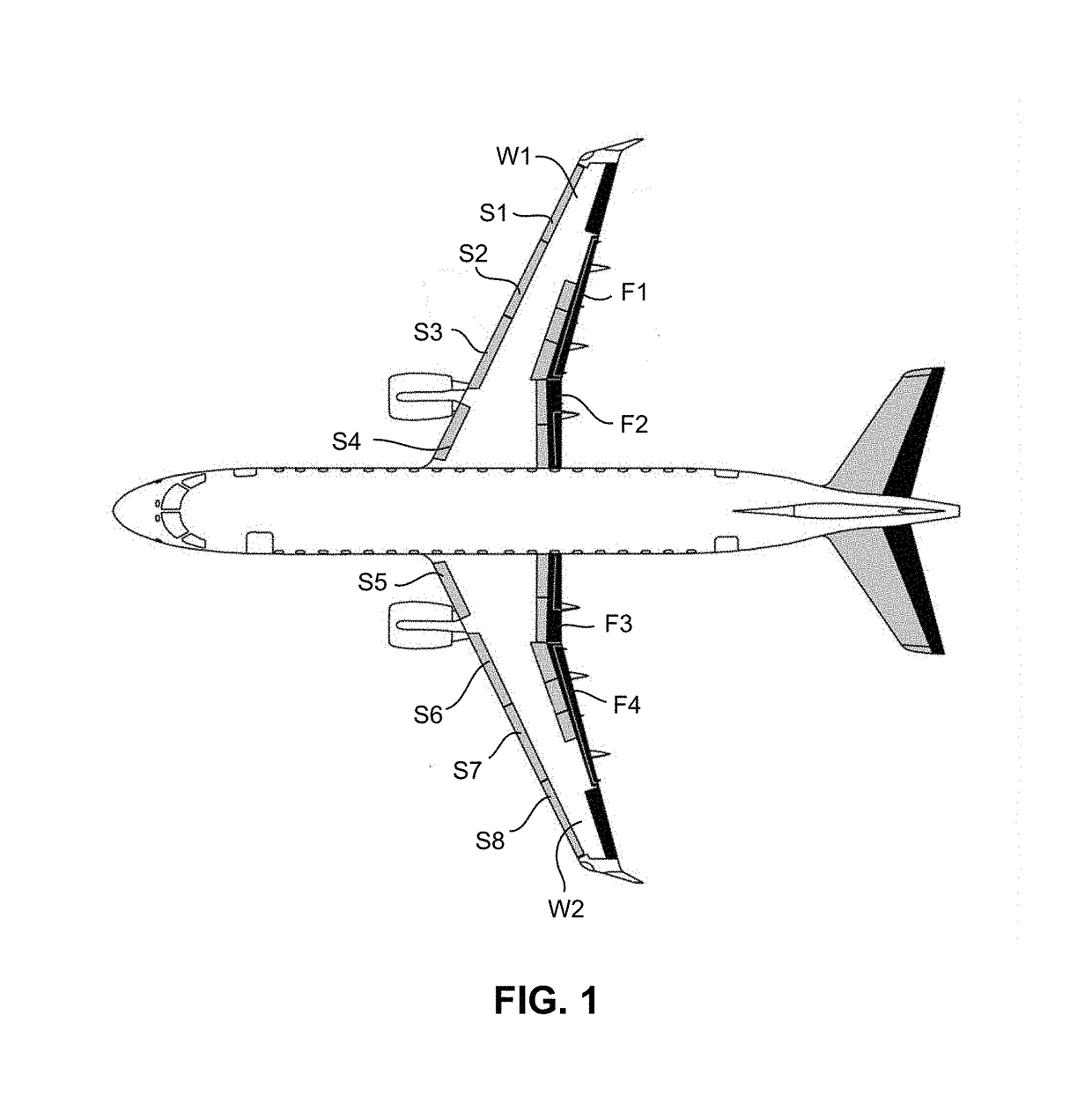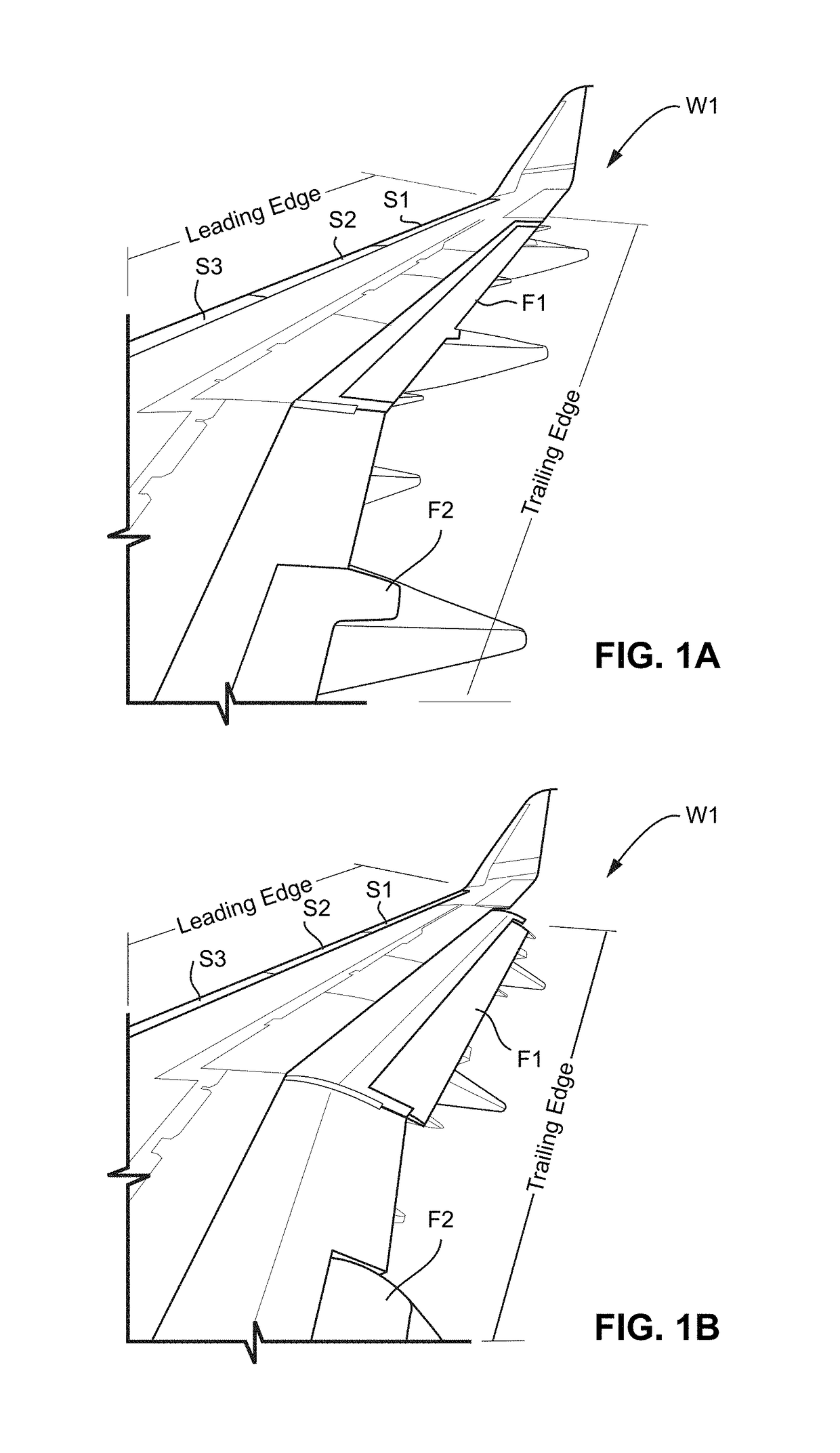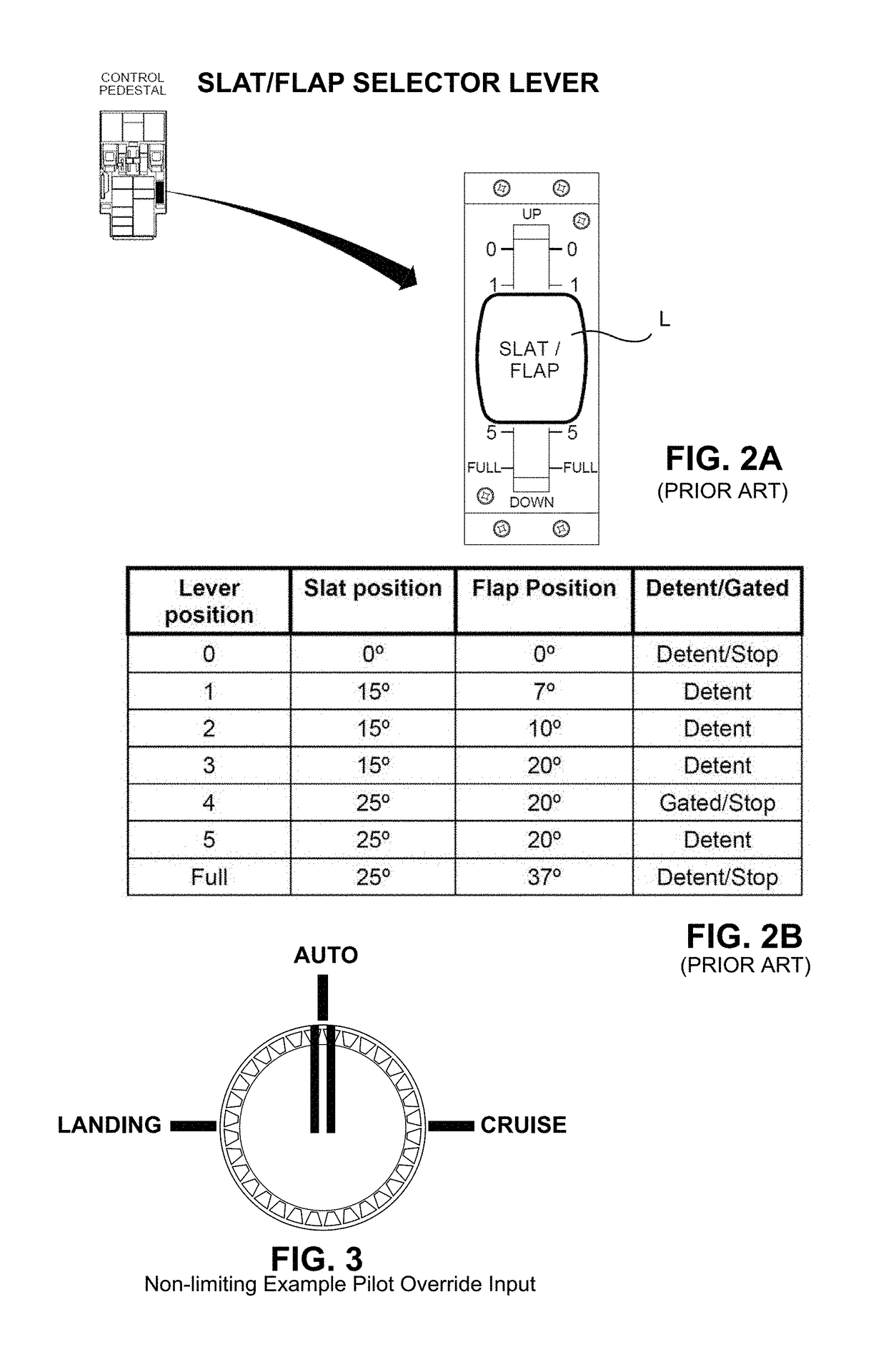Automatic command for lift control devices
a technology of automatic command and lift control, applied in the field of aeronautics and flight control, can solve the problems affecting and affecting the operation of the wing. , to achieve the effect of increasing the camber and/or the area of the wing and therefore the lift of the wing, and reducing the speed of the aircra
- Summary
- Abstract
- Description
- Claims
- Application Information
AI Technical Summary
Benefits of technology
Problems solved by technology
Method used
Image
Examples
Embodiment Construction
[0043]Example non-limiting embodiments herein provide systems, methods and apparatus to automatically position the lift control devices so that an aircraft so equipped will not need to count on the crew to command the lift control devices.
[0044]FIG. 3 presents a non-limiting example of an improved slat / flap selector lever or control, wherein the lift control device position selecting mechanism has exactly and only 3 states: Auto, Flap Full and Flap Up (or Auto, Flap Configuration for Cruising, and Flap Configuration for Landing). In the Auto state, the lift control device positioning process becomes automatic. In fact, FIG. 3 shows a non-limiting example. In a possible implementation, the positions would be FULL and UP, but the idea is to have a position for cruise and a position for landing. Some airplanes have negative flaps for cruise configuration (instead of flaps 0), and, depending on the failure hazard analysis of a specific design, the best flap may not be the FULL.
[0045]Dur...
PUM
 Login to View More
Login to View More Abstract
Description
Claims
Application Information
 Login to View More
Login to View More - R&D
- Intellectual Property
- Life Sciences
- Materials
- Tech Scout
- Unparalleled Data Quality
- Higher Quality Content
- 60% Fewer Hallucinations
Browse by: Latest US Patents, China's latest patents, Technical Efficacy Thesaurus, Application Domain, Technology Topic, Popular Technical Reports.
© 2025 PatSnap. All rights reserved.Legal|Privacy policy|Modern Slavery Act Transparency Statement|Sitemap|About US| Contact US: help@patsnap.com



